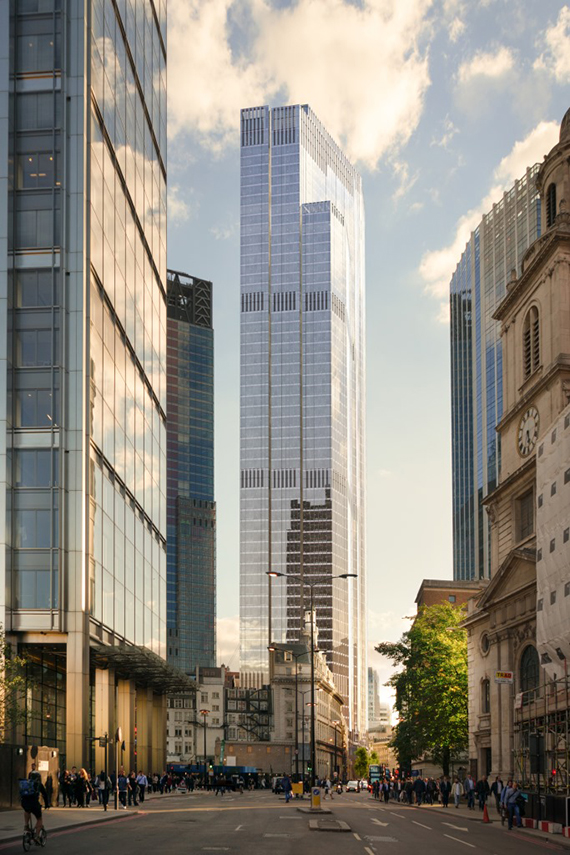James Souter and Claire Fallows look at how powers under section 237 of the Town & Country Planning Act 1990 work, highlight how they have recently come to the fore in the City of London, and consider their potential for the future
The ability of local planning authorities to rely on section 237 of the Town & Country Planning Act 1990 is sometimes seen as a panacea for developers facing difficult negotiations with adjoining landowners with rights over their development sites. The process involves the acquisition or appropriation of land for planning purposes by the authority, allowing the overriding of the rights and the unlocking of the development. It is most commonly used where rights to light are claimed by multiple neighbours of developments which include tall buildings, and the recent high-profile case of 22 Bishopsgate, EC2, serves to highlight the effectiveness of the use of these powers in facilitating development. However, despite the initial appearance that these powers are a developer’s best friend, in practice they are only rarely engaged.
How the powers work
Section 237 allows local authorities, and those deriving title from them, to override rights (such as rights of way and rights to light) and restrictive covenants when undertaking development in accordance with a planning permission. Those with the benefit of such rights and covenants become unable to enforce them. Compensation is payable, but assessed only on the diminution in the value of the affected property as a result of the infringement. Such sums can be considerably less than would be agreed between the parties for a release of the relevant rights. As a result, reliance upon section 237 can be controversial.
In order for section 237 to apply, the authority must acquire or (where land is already held by it) appropriate the relevant land for planning purposes. Appropriation means simply that the purposes for which the land is held by the authority are formally changed. Acquisition or appropriation for planning purposes can be used to facilitate redevelopment or improvement of land where the economic, social or environmental well-being of an area will be enhanced or for other purposes is necessary for proper planning. Once the land has been acquired or appropriated for planning purposes, section 237 allows development related to those planning purposes to proceed without risk of injunction.
The outcome is akin to that of the compulsory purchase process in that landowners effectively lose their rights. However, if authorities propose to acquire land compulsorily, the law requires that they consult affected landowners and objections will be considered at a public inquiry against detailed guidance. The ultimate decision as to whether opposed compulsory purchase orders are confirmed generally lies with the secretary of state, who must be satisfied that there is a compelling case in the public interest. Despite the similar outcome, the law behind section 237 does not include such safeguards. Further, while development must accord with a planning permission, private property matters are rarely material to a decision on a planning application and the application process provides limited protection to affected landowners.
In light of the draconian effect of the operation of section 237, authorities considering reliance on it must proceed with caution and many remain reluctant to do so. If the power of acquisition or appropriation is not exercised appropriately, the resulting decision is at risk of challenge by way of judicial review. In practice, in view of the potential adverse impact on those affected, most authorities follow a similar process to compulsory purchase.
The planning benefits, public interest and private loss will be weighed up by an appropriate committee and the power relied on only as a last resort. The question often arises as to how far developers should negotiate with affected third parties before the far-reaching powers can be used and the examples below show that the hurdle
is generally set high.
Other complications must also be addressed. Where land is in the hands of a developer, the process of transferring it to the authority and then back to the developer, or the grant of a lease, raises issues such as potential liability for stamp duty land tax and best value considerations.
In all of the circumstances, the power is exercised less frequently than developers would like and rarely provides a straightforward answer. A number of recent cases in the City of London highlight the above issues in practice.
 22 Bishopsgate
22 Bishopsgate
The most high-profile recent case of reliance on section 237 since the Walkie Talkie at 20 Fenchurch Street, EC3, is the proposed 62-storey tower at 22 Bishopsgate – on the site of the now redundant Pinnacle scheme. Planning permission for the tower was granted in November last year but the development programme was jeopardised as a result of its impact on rights of light benefiting almost 100 surrounding properties. Given the difficulties in resolving so many claims, the developer asked the City Corporation to invoke its powers to acquire the land for planning purposes to facilitate reliance upon section 237 and allow the development to proceed. In the usual way, the planning officer prepared a report for consideration by the City’s planning and transportation committee.
The problems faced by the developer in dealing with such a large number of claims coupled with the significant reduction in light caused by such a tall building were obvious. At best this would lead to significant delays and at worst it could have jeopardised the entire project. The developer’s solicitors submitted a letter to accompany the planning officer’s report which stated that contracts for the purchase of materials amounting to almost £300m could not be placed until the threat of an injunction was removed. Those representing the neighbouring owners challenged the developer’s contention that all possible efforts had been made to reach agreements with all of those affected.
The committee when approving the use of the powers stressed the following:
● their use must be properly justified;
● the desperate shortage of top quality office space in the City;
● the proposed development sought to regenerate an important site which had been blighted for several years by unfinished works;
● the powers will only be exercised where the developer has taken all necessary actions to reach agreements with adjoining owners.
In the specific circumstances, the use of the powers was ultimately approved by a unanimous vote of the committee. Those in support of the neighbouring owners suggested that further time should have been allowed for negotiation outside the ambit of section 237. This was countered by the suggestion that, on the facts, any amount of time might not have resulted in negotiated settlements to enable the development to proceed.
 21 Moorfields
21 Moorfields
Although not so widely reported, the committee also approved the use of powers to facilitate reliance upon section 237 in respect of the proposed development at 21 Moorfields, EC2, which will rise to a maximum height of only 14 storeys and will be located above Moorgate underground station forming an integral part of the Crossrail station. The committee considered that the increased transport access and economic benefits were in the public interest. The fact that the site had been derelict for some time and the need to have the development ready for the opening of Crossrail also weighed in favour of engaging the powers.
120 Moorgate
In contrast, many cases where developers seek reliance upon section 237 are not successful or ultimately are not pursued. One such recent example in the City is 120 Moorgate, EC2, where the developer had unsuccessfully undertaken several years of negotiations with a single adjoining owner. The developer had already amended the planning permission to cut back the scheme and therefore reduce the infringement of the neighbouring owner’s rights. Nevertheless, the negotiations moved very slowly and so the developer called on the committee for assistance.
Consideration by the committee of the planning officer’s recommendation for the use of section 237 powers was postponed on two separate occasions – and ultimately rendered unnecessary as an agreement was reached between the developer and the affected party.
The future use of the powers
As part of the government’s growth agenda, changes to section 237 are proposed through the Housing and Planning Bill currently making its way through parliament, in part so as to widen the range of authorities that may rely upon it. However, it seems unlikely that the floodgates will open any time soon. The powers of acquisition and appropriation are public powers and should be exercised accordingly. They are rarely an appropriate way to resolve effectively private disputes between neighbouring landowners, where those neighbouring owners are willing to negotiate reasonably.
As the examples above demonstrate, there will be cases where the sheer number of neighbours with whom agreements must be reached will justify intervention. In addition, time pressures imposed by the completion of major infrastructure projects such as Crossrail can also justify their use in the public interest. However, reliance upon section 237 remains far from a panacea.
James Souter is a partner in the property litigation group and Claire Fallows is head of planning at Charles Russell Speechlys LLP








